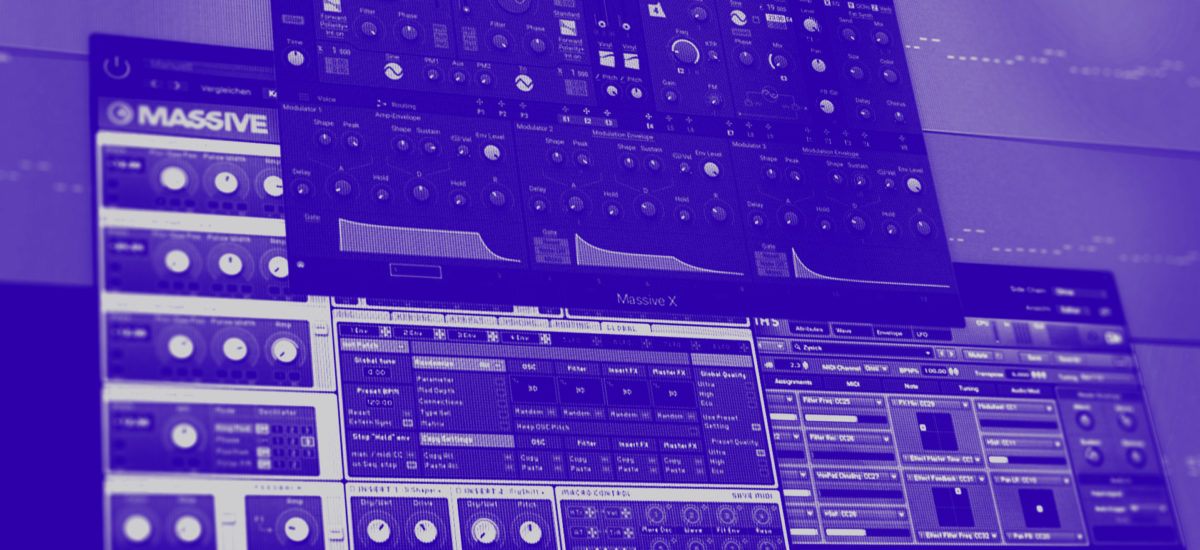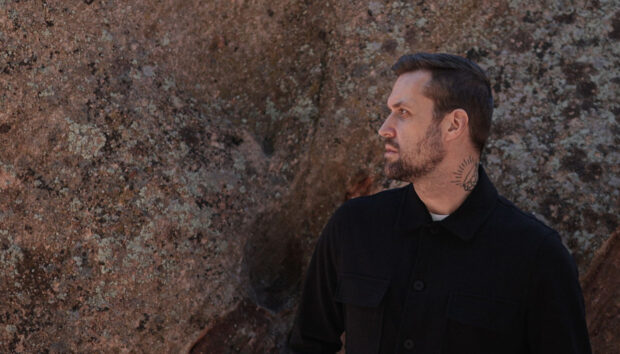
It’s hard to believe NI has been here 25 years. We’ve done a lot in that time, and been through many changes ourselves, but it’s the wider shifts we’ve seen throughout the rest of music culture that have kept us inspired to this day. So, as part of our anniversary celebrations, we want to take a look back, decade by decade, at some of the sounds that we remember most fondly – and how you can recreate them for yourselves.
We’re kicking off, of course, with the first decade that NI bore witness to – the 1990s. Given the pace of technological change at the time, and the rapid democratization of music production tools, it’s really no surprise that the decade spawned so much innovation – and from so many different places. It was a hard list to narrow down, but here’s a subjective run down of the best basses, hardest drums, and most iconic synth sounds of the decade.
That house organ
In the early 90s, vocal house was everywhere. And one of the most iconic sounds associated with this era (alongside the ubiquitous M1 piano patch), was a particular style of organ pluck that today is most often associated with Robin S’s 1992 hit “Show Me Love.” Interestingly, the track first appeared in 1990 in a very different form – and without that organ.
For a modern incarnation of the sound, you don’t have to look any further than MASSIVE X’s Bingo preset – it has all the bounce you’ll need to recapture that early-90s energy. For a slightly more modern edge, Bingo pairs perfectly with chords from the Satallite preset, also available in MASSIVE X.
The mellowest of keys
Portishead’s debut album Dummy was a landmark moment for the emerging trip hop genre. Since its 1994 release, it’s become an inspiration for artists far outside the genre or the band’s native Bristol – even Kanye West has stated that he’s a fan.
A high point on the album for many is “Roads” – a slower track that opens with one of the most mellowed-out electric piano sounds imaginable. To get close with KONTAKT, you’ll need to make a tiny tweak under the hood of the Good Vibrato preset in SCARBEE VINTAGE KEYS. First, click the Insert button on the main interface and adjust the Tremolo speed to taste. Then, hit the wrench icon and add a Pro 53 filter in the Main Effects tab, rolling off the highs until you’ve nailed the vibe.
The Funky Worm's return
Just a couple of months after Portishead released Dummy, a very different artist broke through with his own debut in the US. Snoop Dogg’s Dr. Dre–produced Doggystyle was to have an even bigger impact, defining the sound of West Coast hip-hop for a generation. And if there’s one particular sound that encapsulates that best, it’s the lead sound heard throughout “Gin & Juice.”
The Funky Worm, as the sound became known, wasn’t a Snoop or Dre creation. It takes its name from a 1973 song by the Ohio Players that featured a gliding sawtooth patch played on an ARP Pro Soloist. Dre first sampled this track for NWA’s “Dope Man” before acquiring a Moog synth to recreate it in his later productions. To add some G-funk flavor to your own tracks, just call up MONARK’s WTFunk preset and dial in a little reverb and delay to taste (we’ve gone for RAUM and REPLIKA XT here).
Bouncing basslines
Another choice track from another classic 90s debut, this time Daft Punk’s Homework. The most enduring cut on the French duo’s 1997 album is unquestionably “Around the World” – a house classic that brought the pair’s 70s disco-influences to a new generation of electronic producers.
Aside from the ear-worm talkbox vocal (it repeats 144 times, if you were wondering), the most memorable part of this track is probably that bouncing Bernard Edwards-esque bassline. You’ll have to supply the keyboard/programming chops, but with a little bit of dirt from DRIVER, our SCARBEE MM BASS is more than up to the sonic task of recreating this iconic groove.
Synths vs Strings
While Bristol may seem a small place to feature twice in this list, it really was the epicentre of an explosion of inventive electronic music at the time – so we’d be remiss not to mention Portishead’s trip hop contemporaries Massive Attack. The trio’s 1991 hit “Unfinished Sympathy” is a defining sound of the 90s for many, regardless of location.
While the release featured a full string section, the original demo had the arrangement played on a synthesizer. Here, we’ve appointed MASSIVE (released 2007) to pay tribute to that unreleased version (you’ll find plenty of sampled strings for KONTAKT if it’s realism you’re after). The sound in our example is simply the Life is a Game preset – just two oscillators; some filter movement; and a touch of drive, feedback, and reverb to let those chords bloom.
Boom bap drums
We’ve talked about Snoop and Dre’s West Coast legacy, but we’ll finish up by switching focus to Queens, New York. The second single from A Tribe Called Quest’s Midnight Marauders, “Award Tour” remains a high point – commercially and critically – of the group’s storied career.
Looking for some drums that would “smack that shit out the park,” Q-Tip sampled San Francisco rock band The Sons of Champlin’s 1969 track “You Can Fly.” For royalty-free drums that smack almost as hard, check out the Comeon kit from our Basement Era expansion – and feel free to add some grungy saturation for flavor. Just remember that it’s the sparse arrangement here that really lets each element hit the way it’s meant to.
There’s plenty more 25th-anniversary celebrations to discover. Click here to download TWENTY FIVE for FREE, and be sure to check out the 25th Anniversary Collection – an ultra-exclusive range of KOMPLETE. MASCHINE, and TRAKTOR hardware in your choice of Ultraviolet or Vapor Gray.
Sound design: Konstantin Grismann















